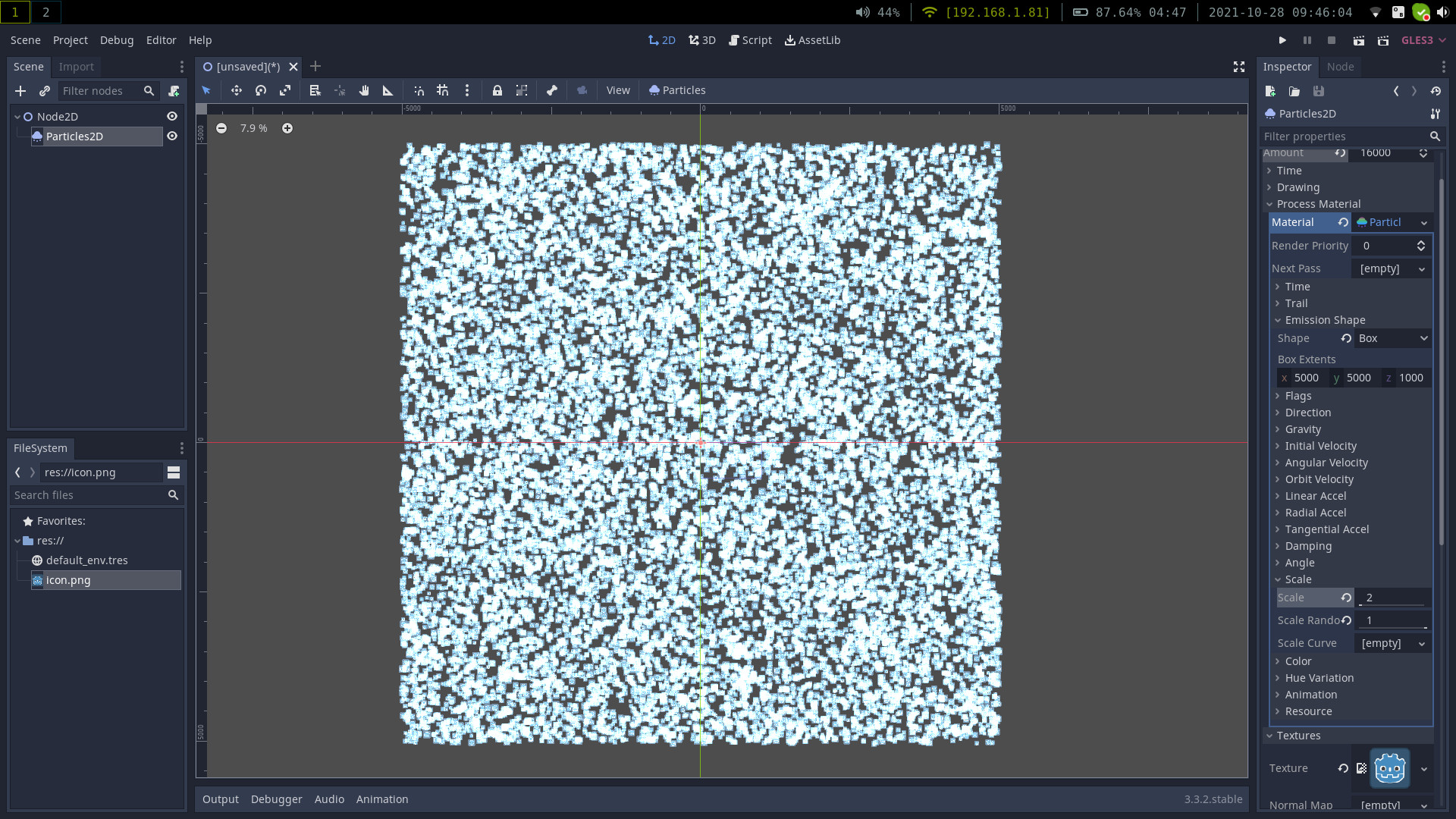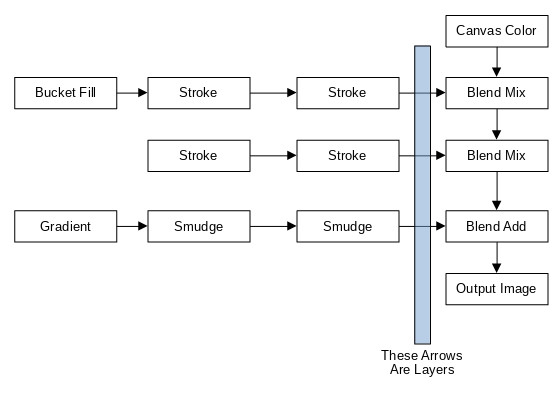In the image processing world there seem to be two options: Raster and Vector Graphics. Raster graphics works with pixels, and you pick a single color for each pixel in a vast grid. Vector images are made from simple shapes - lines, splines, boxes, gradients, and closed polygons. Vector images can easily be tweaked after creation, raster graphics not so much. But what if there was a way to take the creative flexibility of raster graphics and combine it with the editability of vector graphics.
The first question is: why are vector graphics formats limited? Why does svg only define lines, boxes and polygons with a few bonus' like gradients, shadowing and so on? There are two reasons:
- File Size. svg is XML formatted, so defining a spline takes a lot of bytes. The more detailed the curve you want to represent, the bigger the filesize goes
- When it was created in 2001, computers weren't nearly as powerful as they are now, and rendering things more complex than lines was computationally expensive
 Imagine that if instead of rendering a uniform distribution of Godot logos I was instead rendering
an image of a brush texture following a curve read from a file. I would have something that looked
like a raster brush stroke, but the curve could be edited, the brush texture changed, and the pressure
response tweaked. We would also be able to zoom in until you could see the pixels of the brush texture
rather than have some arbitrary "canvas texture" limiting the detail.
Imagine that if instead of rendering a uniform distribution of Godot logos I was instead rendering
an image of a brush texture following a curve read from a file. I would have something that looked
like a raster brush stroke, but the curve could be edited, the brush texture changed, and the pressure
response tweaked. We would also be able to zoom in until you could see the pixels of the brush texture
rather than have some arbitrary "canvas texture" limiting the detail.
Now, 16,000 image splats may sound like a lot, but it's not. Drawing a couple strokes on my screen
with a stylus generates 2000-3000 control points. If we were to expect to render an entire image from
scratch each frame, we would quickly hit a performance bottleneck. Fortunately we don't have to be
so naive. If we use a dependency graph we can only render the things that have changed. If we have a
dependency tree, it also gives us support for layers for free. Interestingly, a layer is a "tag" that
points at the tip operation just before compositing the "layers" together:
 Using a depgraph also means that if you make a stroke on one layer, the other layers don't require any computation.
Using a depgraph also means that if you make a stroke on one layer, the other layers don't require any computation.
Despite computers now being a lot faster, they aren't all-powerful. If
we have a screen of 1920x1080 pixels, and it is four channels of 32 bit
floats, that comes to around 34Mb of uncompressed image data per
buffer. If we assume a VRAM limit of 2Gb, this is only 58 image
buffers. While this is enough to contain the entire image-graph shown
above, it clearly isn't enough to contain the thousands of strokes that
a typical painting contains. There are several possible solutions here.
One is to swap images out to main memory. Giving ourselves 2Gb of
system memory therefore doubles our number of buffers to ~120. Many of
them will compress pretty well (Eg bucket fill is all the same color, a
stroke will have lots of blank space), so if we have a lossless
compression system we may be able to drive this number up even higher.
But eventually there will be a limit. The solution is to use a clever
caching scheme and to discard some image buffers if we don't think
we'll need them. If we ensure that the images within a couple
operations from a layer's tip are stored, then any undo operations will
be fast, as will adding new strokes the top. The only thing that will
be slow is if we edit a very old stroke, which will require
regenerating all of them in the chain.
 I suspect it would be a good plan to pre-allocate a set number of buffers
and then juggle them around. There'll be some algorithm for picking which
buffers to keep in order to maximize performance. An image (at least
the sort I do) is unlikely to have more than 20 layers, so 50 image
buffers in VRAM is enough to keep a couple spares lying around and stay
below our VRAM target.
I suspect it would be a good plan to pre-allocate a set number of buffers
and then juggle them around. There'll be some algorithm for picking which
buffers to keep in order to maximize performance. An image (at least
the sort I do) is unlikely to have more than 20 layers, so 50 image
buffers in VRAM is enough to keep a couple spares lying around and stay
below our VRAM target.
One downside of using a dependency graph is that any time the viewport is moved (eg while doing the painting) the entire graph will be invalidated. There is undoubtedly some clever trickery we could do with tiled rendering, but I haven't thought too much about the topic. Tiled rendering may also allow an "infinite" canvas.
So where do we go from here? There are three things to build:
- A file format to represent a scalable editable raster graphic
- A renderer to render that file format
- An image editor to allow them to be created
Also, did I mention that this whole thing came about because there are no touch friendly image editors for Linux? At least not that I could find. Gimp and Krita are great, but you need a keyboard to use them properly. This got me thinking about how to build my own image editor and .... well, my plan may have got a little bit larger than I would have liked.